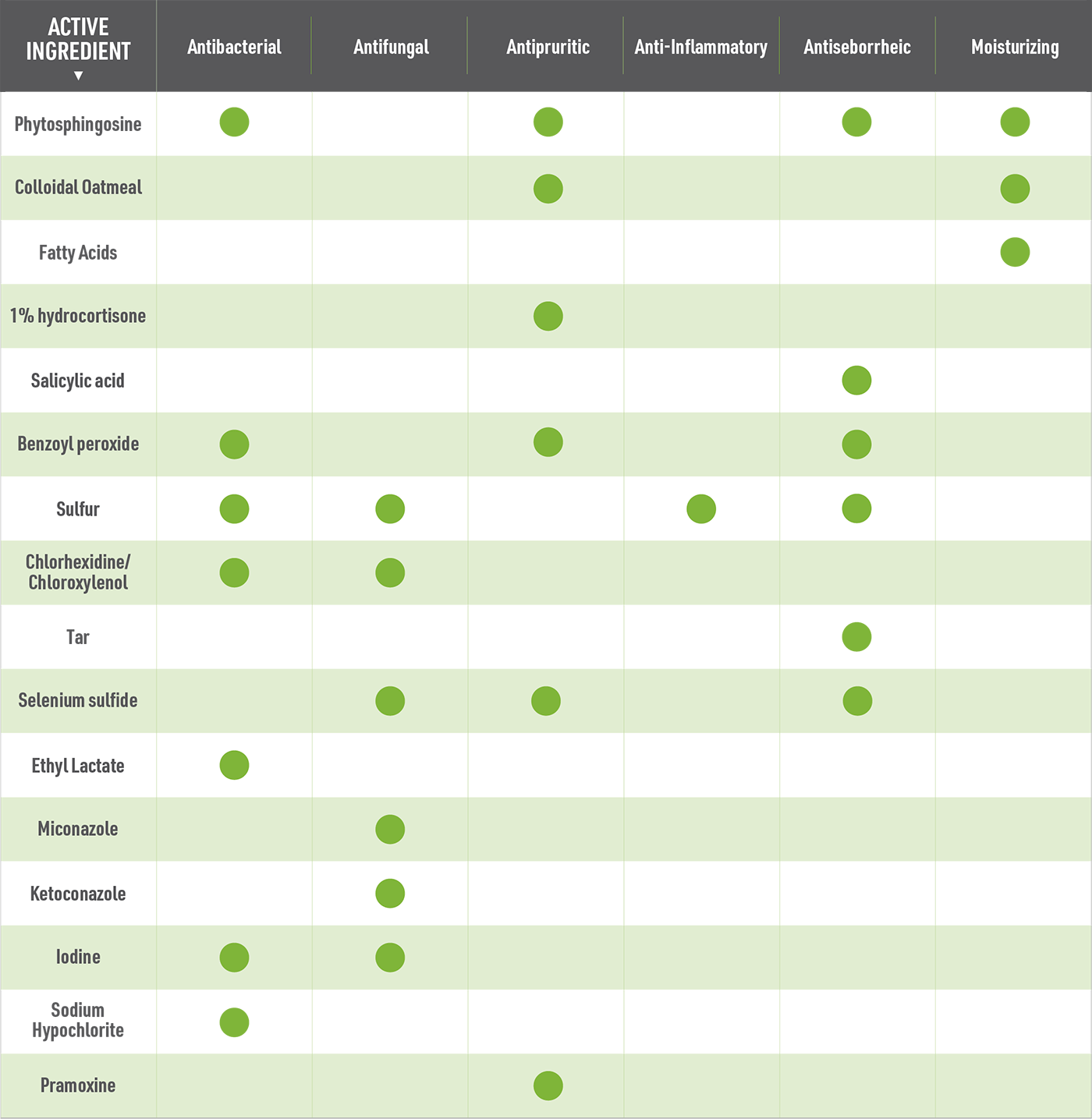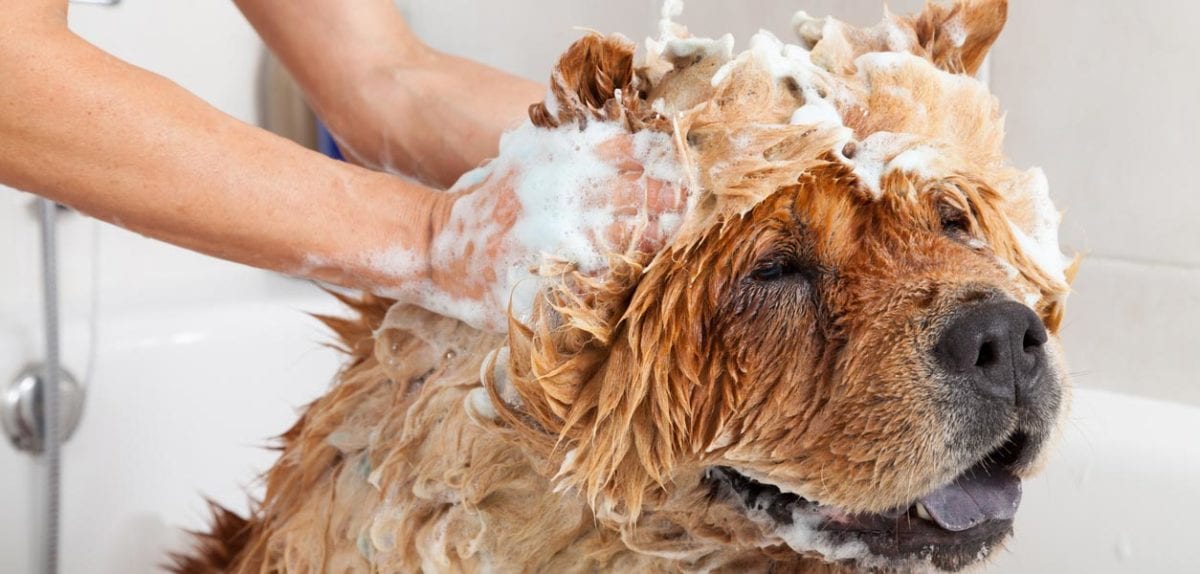Rebecca Mount, DVM, DACVD
Shampoos and sprays and foams, oh my! From duplicate products to excessive stock, there is nothing more frustrating than managing topical product inventory. Like the latest trends in home edits, we are here to discuss streamlining inventory while maximizing options on your dermatology shelves! In order to help eliminate the overstock situations there are two main goals for understanding which topical products are most important:
Goal 1: Understanding the function of each formulation
Goal 2: Understanding active ingredients
Goal 1: Common Topical Formulations
Shampoos
Shampoos are commonly broken down into 6 main categories:
- Emollients and moisturizers: Great for pets with normal hair coats and no skin issues. A nice addition to topical stock, but not necessary.
- Antiparasitic shampoos: Less commonly used due to all of the topical and oral flea and tick preventions out there.
- Antiseborrheic shampoos: Most commonly used for excessive scaling, often related to primary keratinization disorders. Can be over drying. A necessary, but less versatile shampoo. Recommend carrying a small number of antiseborrheic shampoos.
- Antibacterial shampoos- These shampoos are used most commonly to help reduce dysbiosis of normal flora to reduce bacterial skin infections. Antibacterial shampoos are a cornerstone of judicious antimicrobial use and should be considered in all cases in which oral antibiotics are being initiated. Recommend carrying a chlorhexidine-based shampoo and one alternative antibacterial shampoo in case a patient does not tolerate chlorhexidine.
- Antimycotic shampoos-These shampoos are most commonly used for the management of Malassezia dermatitis, but are also helpful in reducing carriage of arthrospores in dermatophytosis cases.Recommend carrying at least one antifungal shampoo, often recommend a combination antibacterial/antifungal shampoo to minimize topical stock.
Antipruritic or anti-inflammatory shampoos: These shampoos often offer short term relief with limited residual effect making them more labor intensive for owners. These are great for uncomplicated, mild allergic cases. A nice option to have on hand, but would only stock a limited amount.
Mousses/Foams
Mousses and foams are newer options which are useful for in between bathing or for owners who are unable to bathe. In some cases, mousses/foams are much easier to apply to large areas compared to sprays. There are also great for treatment of focal areas, like the paws. These may be more challenging to use with thick or long haired regions since it may be tougher to get contact with the skin.- Recommended stock: one combination antifungal/antibacterial option and one antiseborrheic option.
Sprays
Sprays are similar to mousses and foams and offer coverage in between bathing and in place of bathing. They are preferred over mousse for pets that are more resistant to treatment of sensitive areas like paws. However, the spray sound can be a stressor for other pets.- Recommended stock: Sprays and mousses have similar functions and uses. If you prefer sprays stocking an antifungal/antibacterial option and an antiseborrheic spray is recommended.
- Steroid containing sprays can be a good option for treating focal areas of persistent pruritus. It is important to use topical steroids very cautiously to prevent steroid-induced skin atrophy
Gels
Gels are commonly used for the treatment of very localized areas, like the paws or chin. They are generally less sticky compared to ointments. Due to limited use, generally recommend ordering on an as needed basis for specific cases.
Spot on fatty acids
These are another niche product which allow for the active ingredients to concentrate in the skin, hair follicles, and sebaceous glands. Can help restore the barrier function of damaged or allergic skin. Due to limited use, generally recommend ordering on an as needed basis for specific cases.Goal 2: Active Ingredients
Many of the active ingredients in topicals have multiple beneficial effects and can help streamline topical stock since they have multiple functions.

The most common mistake when ordering topicals for dermatology cases is ordering duplicate products. The best way to streamline your stock is to limit the number of products carried for each function discussed above. A major pitfall is ordering products from multiple manufacturers that cover the same function and have similar active ingredients. Topicals are a huge part of the management of long term skin disease, so it is important to understand the when and why of product selection.

About the Author
Dr. Martha Lane Friedman earned her Doctorate of Veterinary Medicine from the Auburn University College of Veterinary Medicine. She completed an internship in Small Animal Medicine and Surgery at Louisiana State University, followed by a residency in Veterinary Dermatology. Dr. Friedman was board certified as a veterinary dermatologist by the American College of Veterinary Dermatology (ACVD) in 2017. She is currently providing veterinary dermatology services with Auburn Veterinary Specialists – Gulf Shores.
